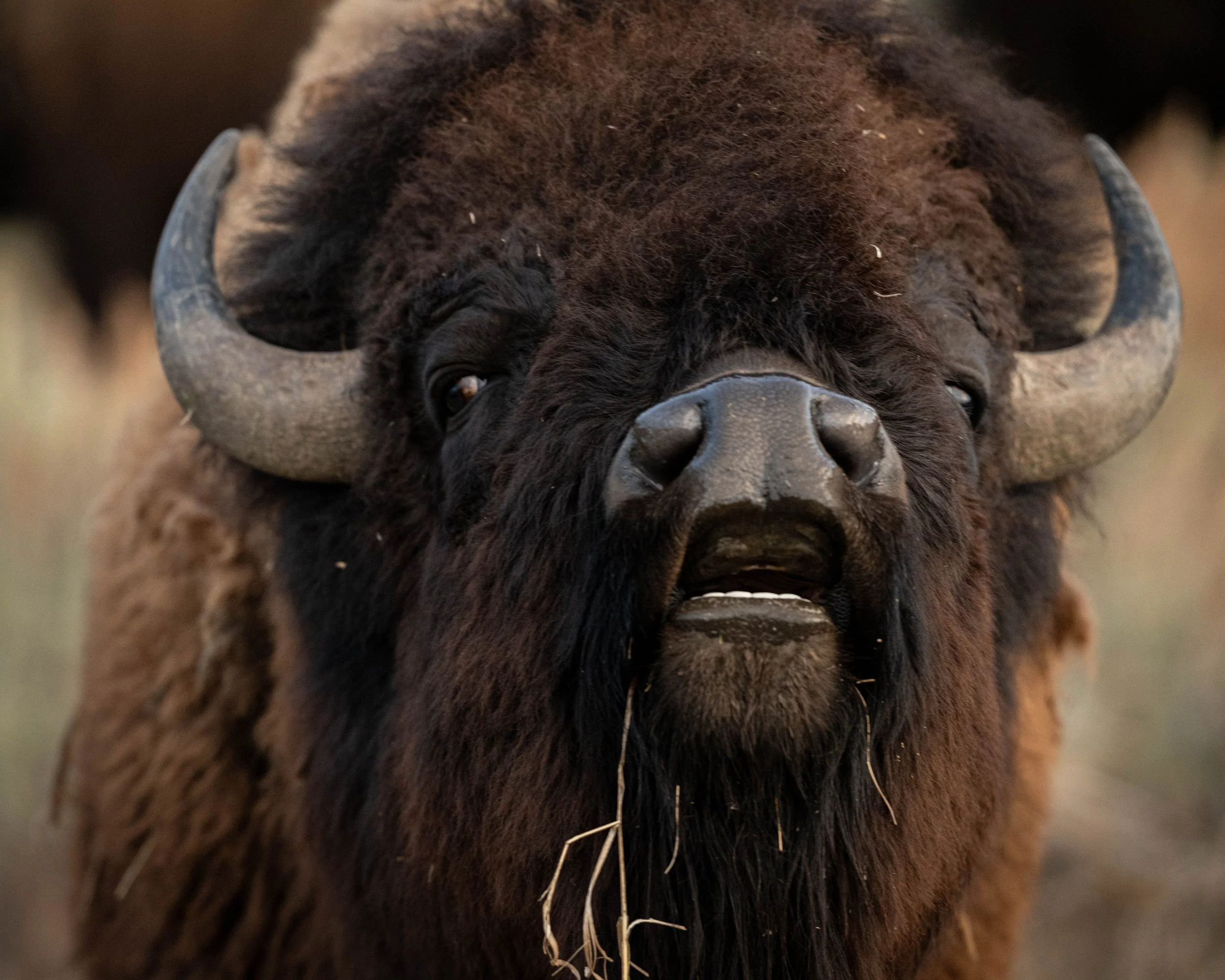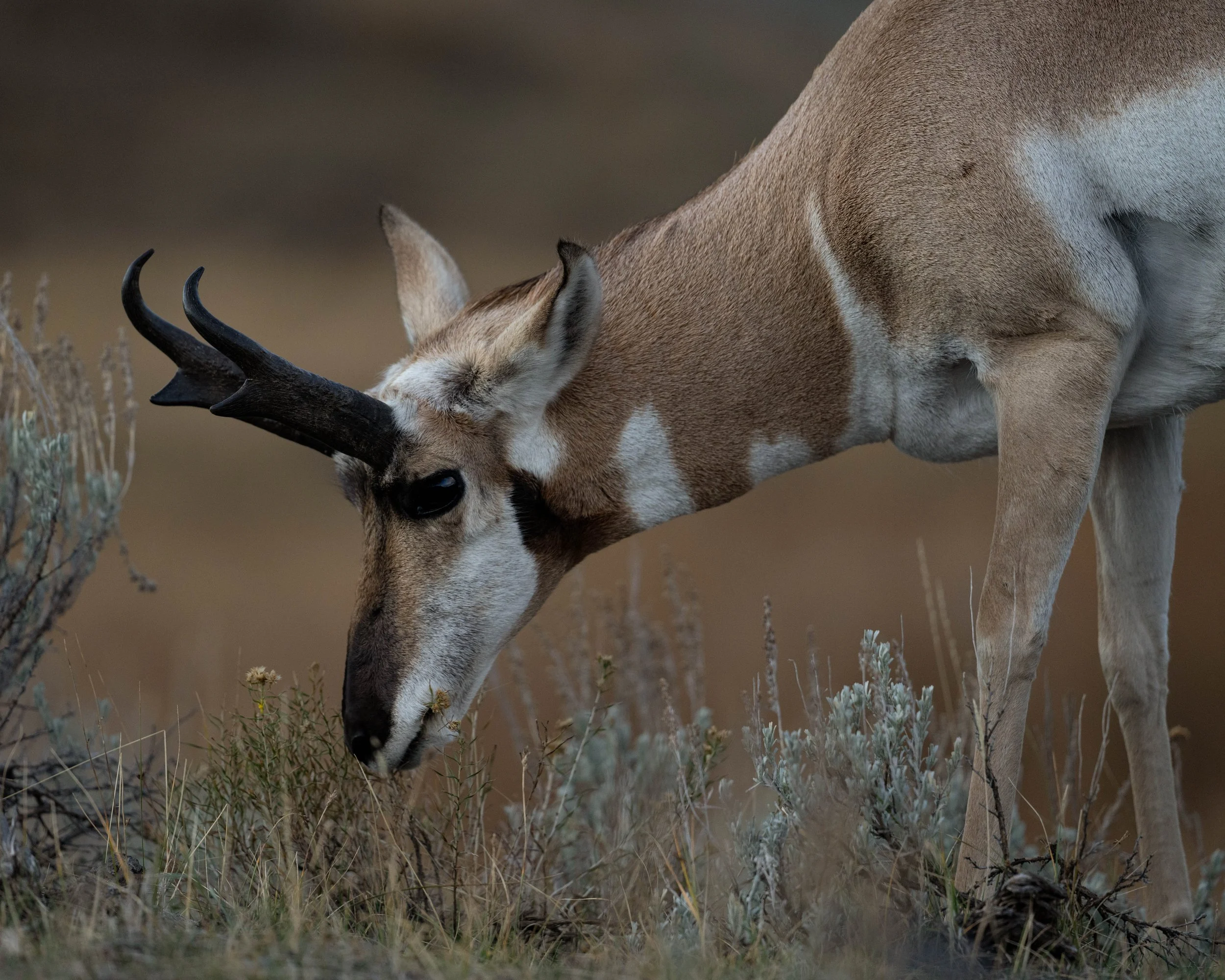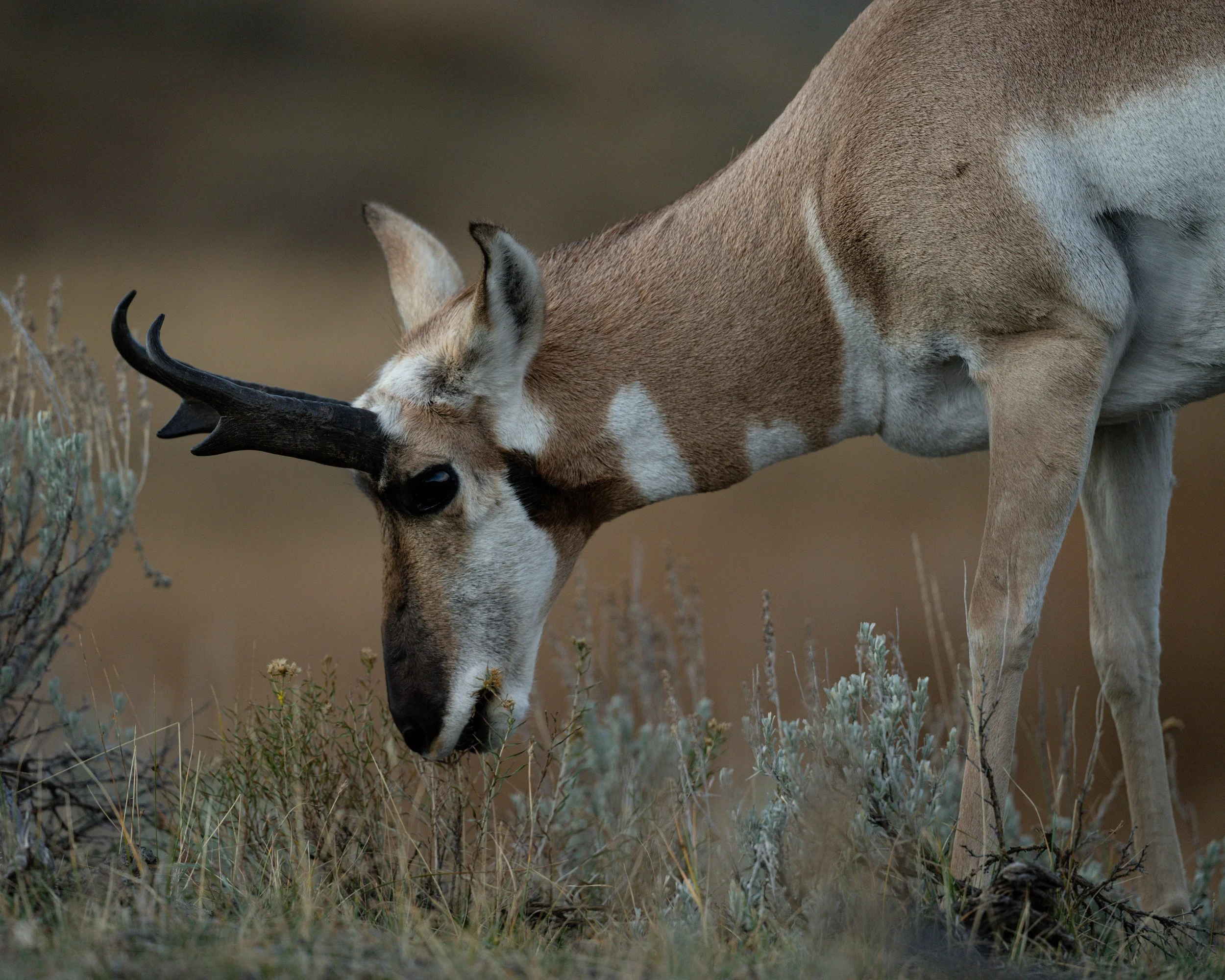
YELLOWSTONE
‘The World’s First National Park.’
“Our ability to perceive quality in nature begins, as in art, with the pretty. It expands through successive stages of the beautiful to values as yet uncaptured by language.”
~ Aldo Leopold
“The Yellowstone Bison”
Bison are huge. Driving through Yellowstone and witnessing these gorgeous beasts is an experience I will never forget. Male bison can weigh up to 2,000 pounds! Females up to 1,000 pounds! (Yellowstone Bison)
The history of The Yellowstone Bison Herds is actually very interesting. According to NPS, “Yellowstone is the only place in the lower 48 states to have a continuously free-ranging bison population since prehistoric times”(Yellowstone Bison). Yellowstone National Park has been such a great resource for preserving bison that they now state there is a difficulty to manage the rapidly growing migrating herds to keep them away from private property and unwanted territory (Yellowstone Bison). There are many conversations happening about conserving the ‘wildness’ of bison. According to rewilding.org, many bison populations have other cattle genetics, but the Yellowstone Bison have the purest bison genetics, thus, leading to the desire to preserve this special population. As the herds grow, conversations are happening that would allow a larger land mass to be labeled as the Greater Yellowstone Area by adding surrounding forest areas in order to give these wild animals a chance to stay wild and to preserve the purity of the wild land. (Expansion and Restoration of Bison to Greater Yellowstone Ecosystem - Rewilding). Bison population studies are fascinating! What special beasts!
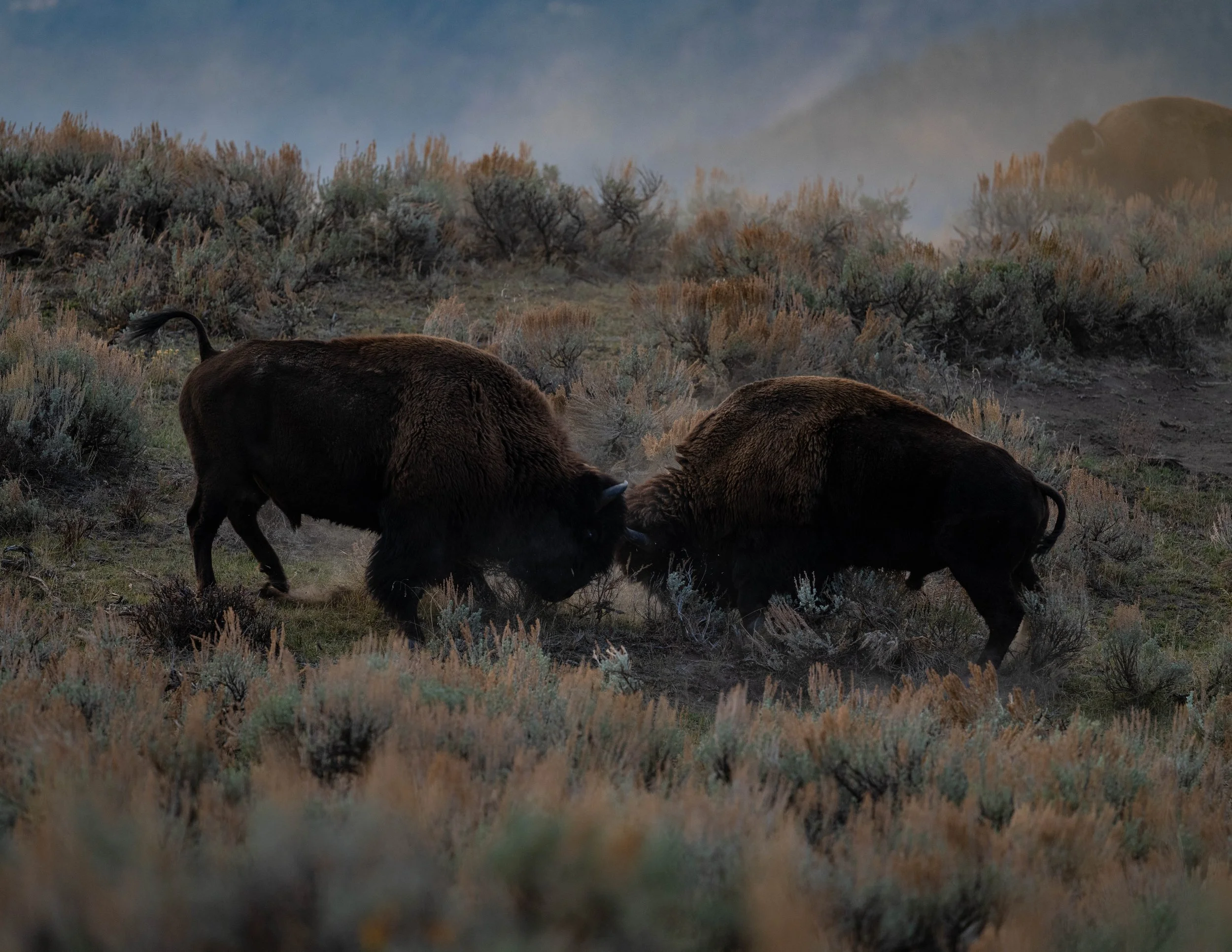
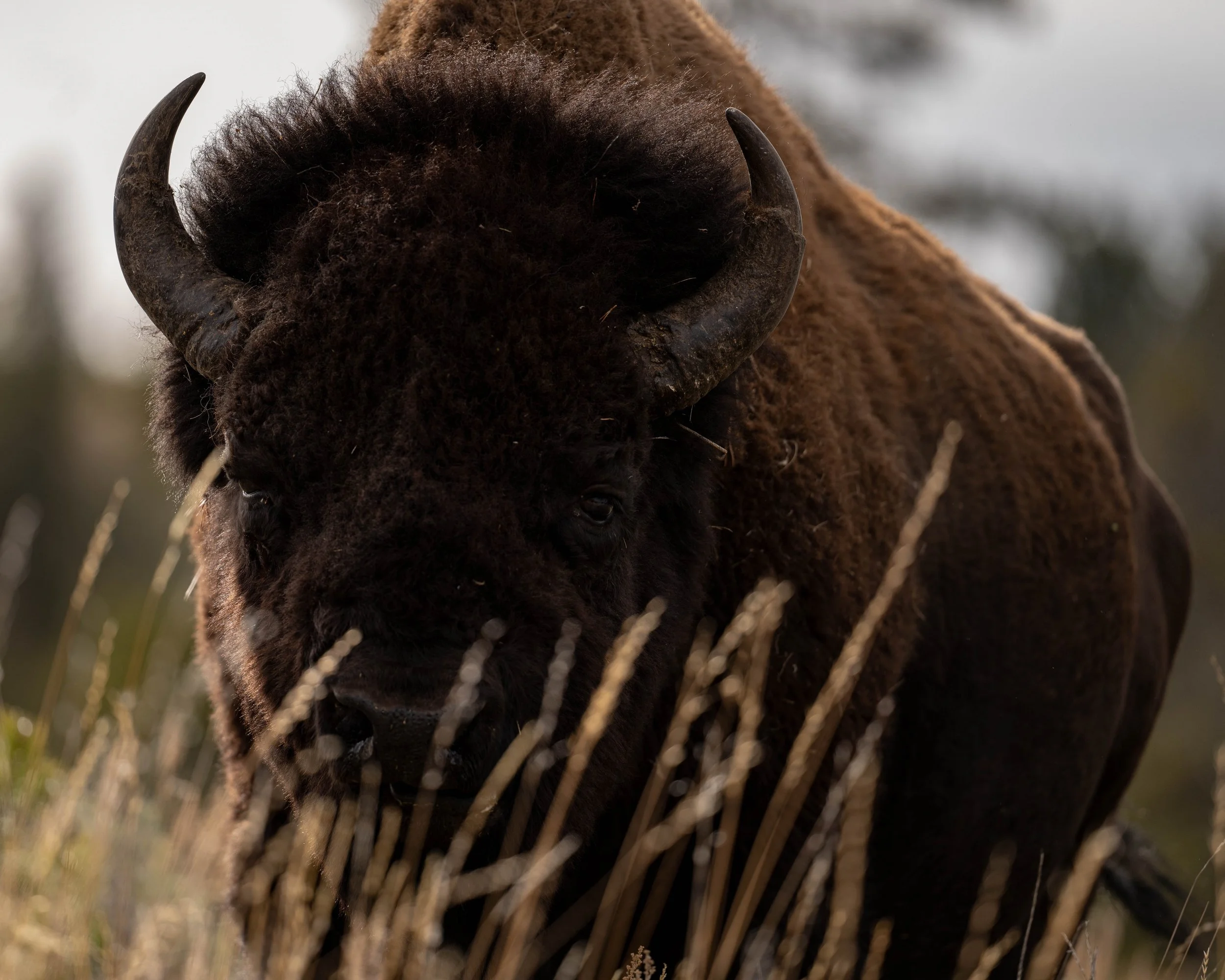
“How Bighorn Sheep ‘Talk’”
Bighorn Sheep are known for their horns, and they use them to fight! Weighing up to 200 pounds with muscular bodies and an incredible ability to jump, these dominance “conversations” between males can get intense. They can charge each other for hours at speeds of up to 20 miles per hour! Bighorn Sheep | National Geographic To try to avoid serious injury during these intense interactions, rams have a double layer of bone above their brain that absorbs shock during dominance fights with other rams. Bighorn Sheep - Yellowstone National Park.
“The Pronghorn: ‘A Story of Loss and Hope’”
Pronghorns are beautiful animals. When I was planning my Yellowtsone trip, they weren’t at the front of my mind, but they were one of the biggest and best surprises of the trip. Driving through the park roads, they appear to be gracefully grazing but can prance away in seconds. With their fascinating colors and majestic horns, they were a sight to see. Interestingly, they are also the fastest land mammal in North America with the ability to run 50-60mph, and even though the cheetah is a bit faster, the Pronghorn can run these speeds for a more sustained amount of time (Yellowstone Pronghorn).
The Pronghorn story is a prime example of the way that humans trying to “manage” and “control” nature can cause unintended secondary consequences. Land development has cut off necessary migration routes, and the elimination of wolves in Yellowstone has led to an overabundance of coyotes in the park to prey on young Pronghorn fawns (Yellowstone Pronghorn). There were up to 35 million pronghorn in North America before the European Settlement in the West (Pronghorn - Yellowstone National Park); there are now only 500-600 pronghorn in Yellowstone National Park (Pronghorn - Yellowstone National Park).
Sadly, Pronghorn populations have become a special concern for conservationists in Yellowstone because of the small herd sizes. These small herds of Pronghorn could be completely eliminated by a virus or smaller scale natural disaster.
Since this devastation for the Pronghorn population, some effort has been made to help these guys get back on their feet. With the introduction of wolves back into the park, Pronghorn fawn survival rates have increased (Pronghorn - Yellowstone National Park). Another long-term way to help these guys is to protect their migration route north through Gardiner along the Yellowstone River (Pronghorn - Yellowstone National Park).
Let’s help get these guys back on their feet!
Learn more about Yellowstone Conservation with Yellowstone Forever
Photos taken by Laura Czaplicki on a SONY A7RIV + 300 prime and edited lightly in Lightroom.
